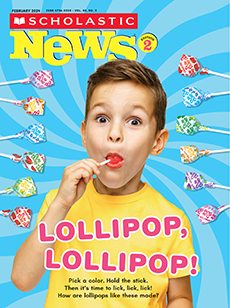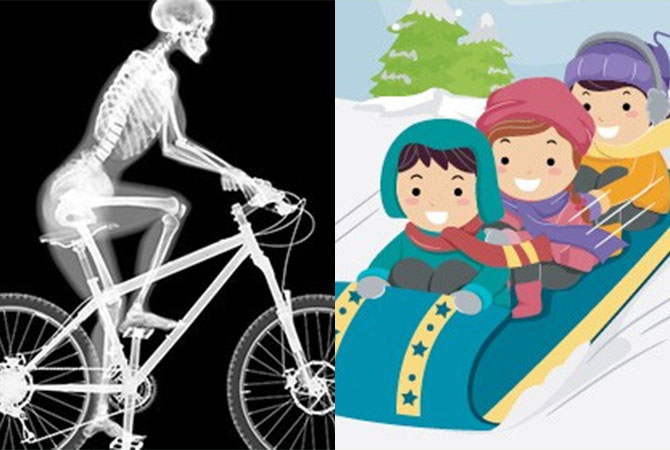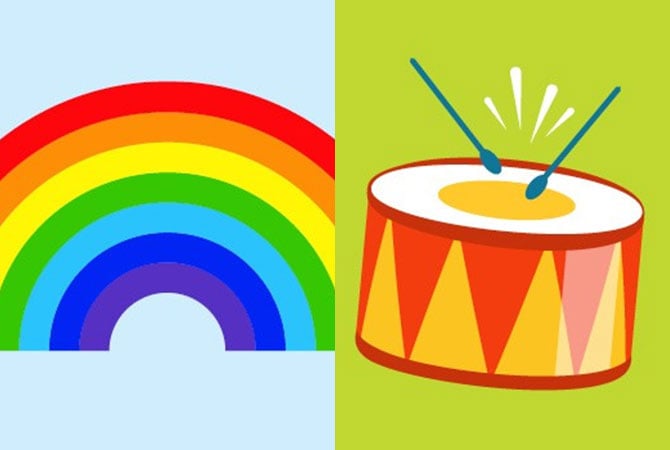1. Just a Minute!
This activity fosters coordination and motor skills.
Materials: space (indoor or outdoor), timer or clock
Challenge your child to see how many jumping jacks they can do in a minute. Before they start, have them predict how many they will be able to do. Can they do as many as they thought?
Then have your child try it with other kinds of movements too, like push-ups, sit-ups, or arm circles. This is a great activity to return to day after day. Can kids beat their own records?
2. Splish Splash
This activity fosters coordination and motor skills.
Materials: outdoor space, plastic bottle filled with water, plastic cup. Optional: measuring tape or ruler; household objects like kitchen tongs, spoons, pens, etc.
Place an empty plastic cup on the ground about 10 feet away. (If you do not have a measuring tape or a ruler, 10 feet is about twice as long as your child from head to toe!) Give your child the bottle of water and tell them to carry it to the cup and pour the water in without using their hands! They can use other parts of their body, like their elbows, knees, or lips. Or they can try carrying it with household objects like tongs or two spoons. Have your child keep trying until they are able to carry the water all the way or until they spill it all!
3. Freeze Dance
This activity fosters coordination and motor skills.
Materials: music, space (indoor or outdoor)
Play your child’s favorite song. Have them dance while the music plays and pause the music at random points. Tell them they must freeze in place each time the music stops.” Keep going until the song ends.
4. How Many Skips?
This activity supports estimation and counting skills.
Materials: space (indoor or outdoor)
Have your child guess how many skips it will take for them to get from one place to another (for example, from one room to another or from one outdoor landmark to another). Then they should actually skip between the two places and keep count to see how close their guess was!
5. Up/Down/Left/Right
This activity fosters coordination and motor skills.
Materials: space (indoor or outdoor)
Have your child pretend they’re in an endless runner video game. Have them jog in place while you call out directions. When you call out up or down, your child should jump or duck, respectively. If you call out left or right, your child should turn and face that direction. See how long your child can go without getting all mixed up!
6. Animal Walk
This activity fosters motor skills.
Materials: space (indoor or outdoor)
Go for a walk with your child and, along the way, have them move like different animals (for example, hop like a bunny, scurry like a crab, or run like a cheetah)!
7. Mirror, Mirror
This activity improves concentration.
Materials: none
Have your child stand face-to-face with someone else.
Choose who will be Person A and who will be Person B. Person A will be the “mover” first. Person A will start out with small movements, like wiggling their nose. Then Person A will try bigger movements, like swinging an arm from side to side. Person B must follow Person A’s movements EXACTLY. It should look like Person A is looking in a mirror!
Then switch! Person B will be the “mover.” Person A will follow their every move.
8. Find the Rhymes
This activity promotes literacy.
Materials: none
Ask your child to choose one thing around the home that has a simple name. For example: door, cat, or bed.
Your child will then walk around your home and find other things that rhyme with that word. For example, if they chose a “bed,” they might find a “sled” or some “bread” in the home too!
Your child can play this indoors or outdoors.
9. Guess the Animal
This activity fosters coordination and creativity.
Materials: none
Have your child act out different animals for other people in your family to guess.
Have one child think of an animal. They will act like this animal for one minute without making any sound. Can anyone guess which animal they are being?
After one minute, if the animal has not been correctly guessed, your child can make noises too (but NO words!).
Tip: If thinking of different animals will be difficult, write down the names of several animals on small strips of paper. Put the strips in a container and have your child pick one out!



